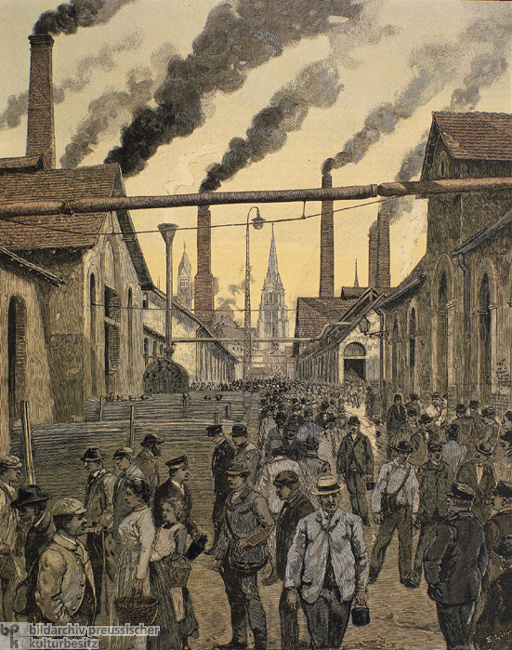|
Changing Shifts in Neuenkirchen (on the Saar River) (1899)
This 1899 woodcut by Emil Limmer (1854-1931) shows workers at various modern factories in Neuenkirchen (on the Saar River) during a shift change. Industrial employment increased rapidly after 1850, so much so that by the turn of the century, Germany had become a dynamic industrial society with large urban centers. With the introduction of mechanical production in factories, shift-work became part of life for workers. In order to maximize productive capacity and to make investments in expensive machinery profitable, the factory workday was organized into two or three shifts, allowing facilities to operate around the clock.

|


